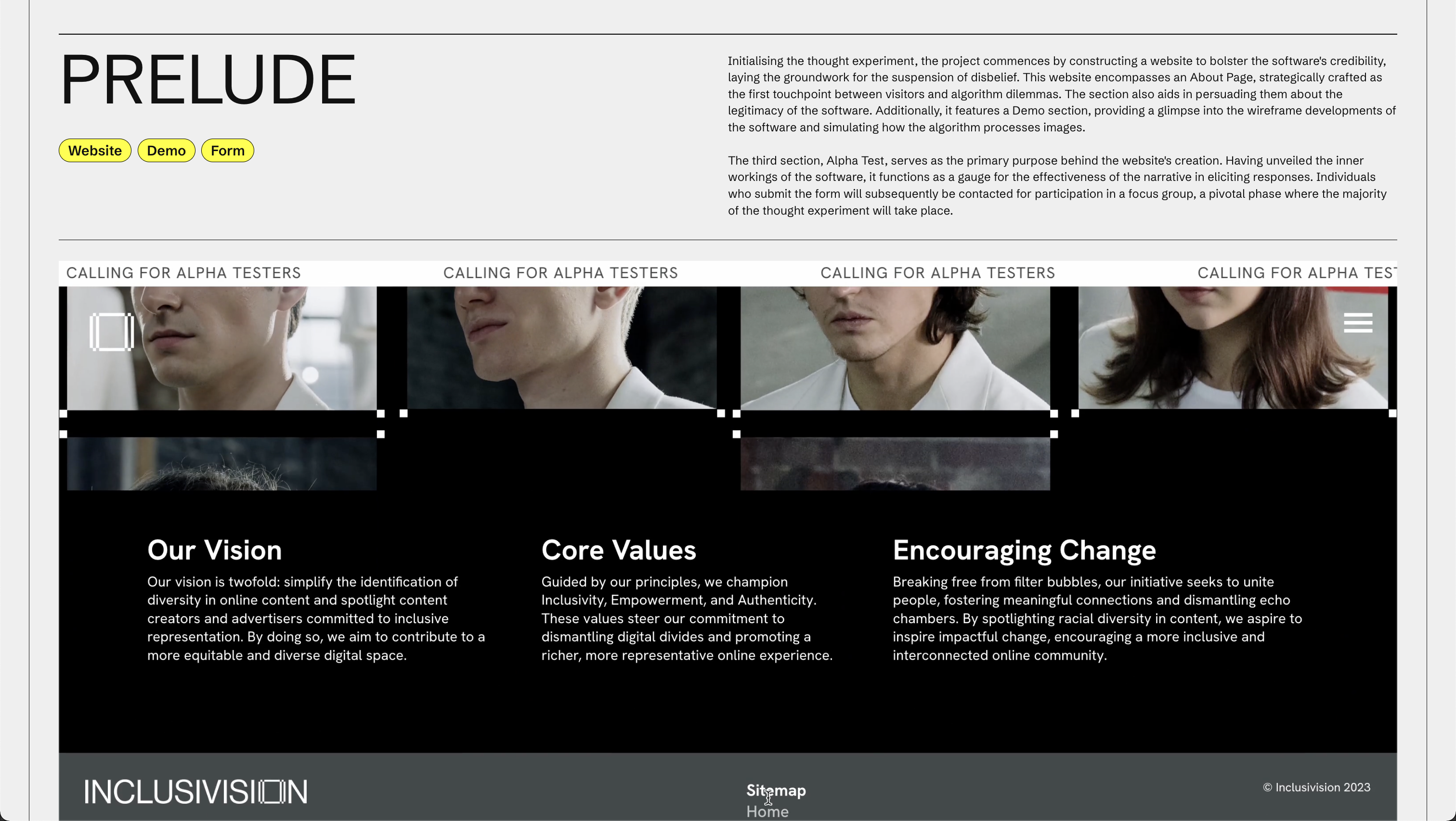▩▩▩▩▩▩▩ WEEK 15 ▩▩▩▩▩▩▩
Catalogue of Making Update
I updated my catalogue of making with the multi-face tracking experiment, which I spent the most time on. Upon reviewing the chronological list of my experiments, a clear progression unfolds, showcasing the evolution of my concept into the prototype. This evolution, I believe, encapsulates the essence of the experimentation process.
Several weeks prior, Andreas highlighted the distinctions between experiments and prototypes. In my understanding, a prototype serves as the presentation of an idea or concept, whereas experiments function as testing phases, unraveling what works and what doesn't, directly contributing to the refinement of the prototype. To enhance the user experience and streamline navigation through my catalog, I deemed it beneficial to dedicate a separate page specifically for the prototype. This segmentation aims to offer users a more intuitive and organized exploration of the development journey.
On the prototype page, I chose an alternative layout to ensure a clear distinction from the experiments page. While I earlier outlined that my prototype comprises three parts, I've come to realize that the website serves as a prerequisite to the prototype. Hence, it's more logical to categorize it as a Prelude, reserving the designations A, B, and C for the remaining components of the prototype. This reclassification aims to provide a more accurate representation of the interconnected elements within the development structure.
Before delving into the prototype, I established a comprehensive two-part "About" section to offer a foundational understanding of the prototype's context. In the first segment, 'About,' I highlight the purpose driving the creation of the prototype, while the second part, 'Narrative,' unfolds the storyline the prototype is conveying. Currently, a placeholder image occupies the right section, a space I intend to fill with behind-the-scenes images of the focus groups to enhance documentation. For an organized documentation structure, I adopted an alternate layout, leveraging rows to delineate distinct sections—Text, Documentation, and Processes.
I'm pretty content with my catalogue of making; the entire website echoes my visual aesthetic while ensuring effective communication. However, a noteworthy concern surfaced during a recent viewing of my website from my friend's 40-inch monitor screen. The text-to-image ratio size was askew, making the text notably challenging to read. Andreas has previously flagged issues with font size, and now I understand why. Exploring solutions online, it seems promising to switch the unit of rem to vw, allowing for scaling with the viewport width. Although I won't make this adjustment right before submissions, I plan to discuss it with Andreas for potential refinement in the upcoming semester.

Prototype About section

Prototype Documentation section
Overview Slides
I revamped the overview slides for this presentation, building on the foundation from the cohort presentation a few weeks ago. In that short span, my understanding of the research topic deepened, leading to significant adjustments in research objectives and approaches. To compensate for the lack of verbal explanation, I incorporated more text into the slides. Additionally, I introduced flow charts and diagrams to enhance clarity, offering a visual aid for easier comprehension of key points without the need for extensive text exploration.
Upon comparing this slide iteration to the one used in the cohort presentation, a notable evolution in thought organization is evident. The background is now clearer, rationales are more systematically structured, and key concepts are simplified for enhanced understanding. Crafting these slides became a notably smoother process, allowing for more effective communication of the project's background, rationale, and key concepts. At this juncture, I felt equipped to seamlessly integrate the fundamental concepts from each research pillar, constructing a robust narrative flow to convey the essence of my research.
Initially, I grappled with the expectations for the 'Summary of Body of Work' section. Should I meticulously list each experiment with detailed rationales, akin to my catalogue of making, or should I provide an overarching summary of objectives and key learnings? Opting for the latter made more logical sense to me. To enhance clarity, I divided the experiments and prototype into distinct sections, allowing ample space for comprehensive explanations of the intricate facets of my 4-part prototype.
In revising my design statement, I ensured the explicit mention of both primary and secondary objectives. I took pride in seamlessly integrating them with my chosen approach and method—a notable accomplishment given my usual challenges in expressing intentions through writing. This refinement not only clarified the purpose of my research but also strengthened the overall coherence and effectiveness of the design statement.
Before proceeding with my next steps, I took a much-needed break for contemplation. Amidst the constant rush to meet near deadlines, I hadn't found the time to plan my schedule. Upon reviewing the timeline for the upcoming semester, I was taken aback by its tight constraints. Recognizing that my project's progress is interdependent, overcoming a hurdle in one step is essential for advancing to subsequent tasks. In the days ahead, I'll endeavor to expedite my prototype, with contingency plans in mind if I encounter significant obstacles. While aiming for an ideally functional prototype, I acknowledge that partial functionality suffices for conducting focus groups.
In alignment with the semester timeline, I organized my forthcoming tasks by month. Prioritizing updates to my dissertation, I plan to manage my workload, making some compromises on my CPJ updates, as it is due later. Additionally, I don't intend to extend my work beyond the contract expiration in December, providing an opportunity to dedicate more time to advancing my project.

Slides in order